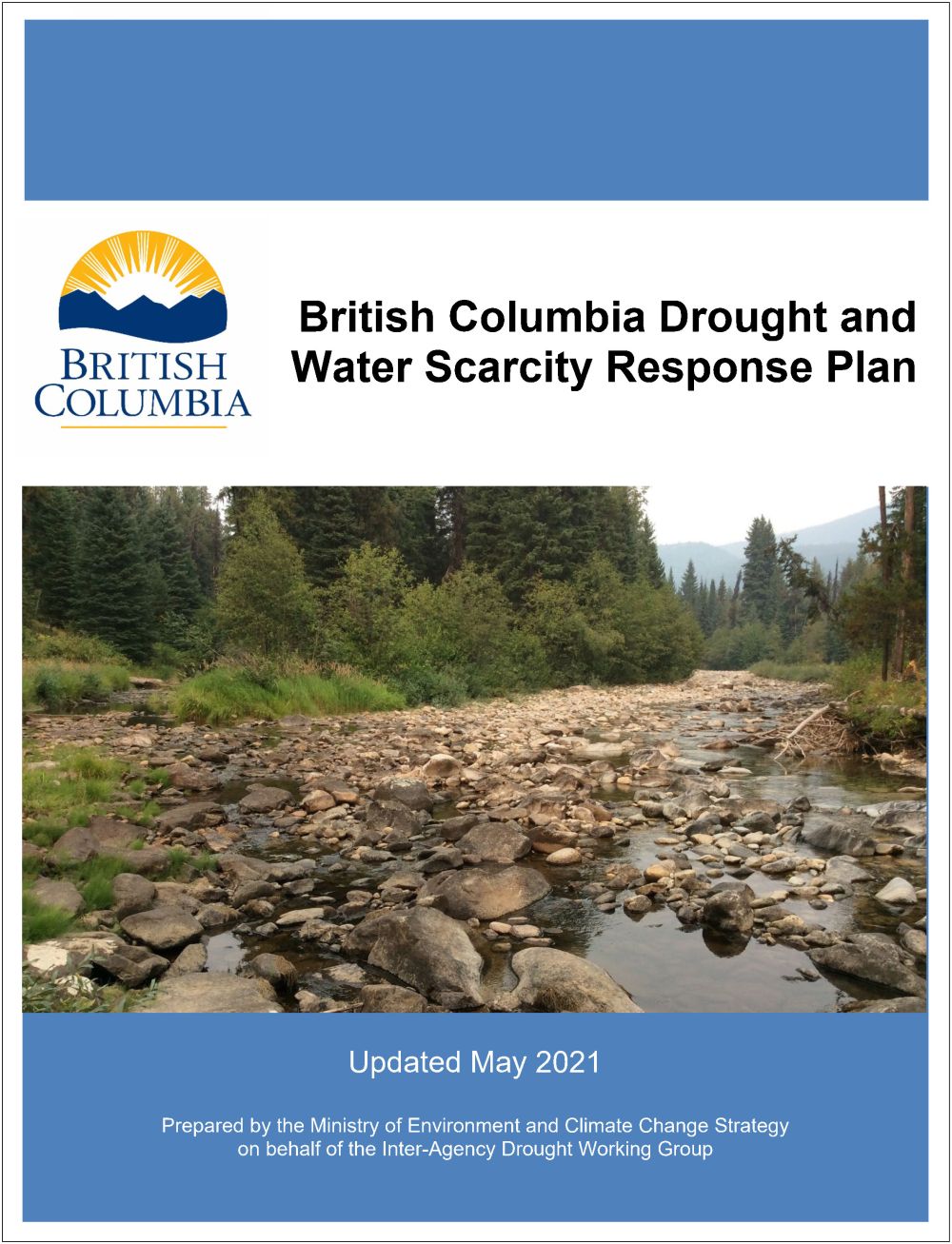BRITISH COLUMBIA’S DROUGHT RESPONSE PLAN / 2021 UPDATE: “Expanding the existing drought levels from a four to six-level scale more accurately describes stream flow drought and water scarcity conditions in B.C,” stated Julia Berardinucci, Director of Water Strategies and Conservation, Ministry of Environment and Climate Change (May 2021)
Note to Reader:
The British Columbia Drought and Water Scarcity Response Plan focuses primarily on hydrological drought and water scarcity response: the actions taken preceding, during and immediately following a hydrological drought to reduce its impacts. It will assist with ensuring water needs for people and aquatic ecosystems are met in times of drought and water scarcity. Originally developed in 20o4, it has been updated several times, with 2021 being the most recent.
Download a copy: British Columbia Drought and Water Scarcity Response Plan
The following article provides historical context for BC’s plan. The article connects the dots to the 2003 “teachable year” which set in motion decisions, actions and outcomes which continue to ripple through time.
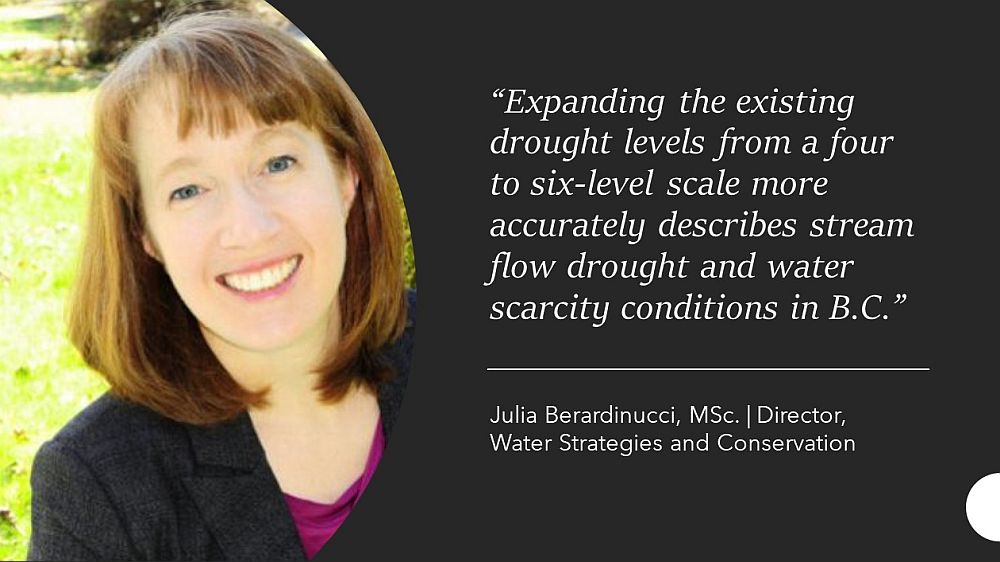
Floods Affect Some of Us / Droughts Affect All of Us
“In British Columbia, we measure our droughts in months – with the range being three to six months. Memories are short, and we are easily lulled into complacency. That is why it is timely that the provincial government reminds us of the importance of a Drought Response Plan, even when people live in a rain forest,” stated Kim Stephens, Executive Director, Partnership for Water Sustainability in British Columbia.
 “Consider our recent experience. For five straight years, from 2015 through 2019, British Columbia repeatedly dodged a bullet due to the new reality of longer, drier summers. 2020 was different. It was a wet year. This is why we must not be lulled as we emerge from winter and look ahead to summer.”
“Consider our recent experience. For five straight years, from 2015 through 2019, British Columbia repeatedly dodged a bullet due to the new reality of longer, drier summers. 2020 was different. It was a wet year. This is why we must not be lulled as we emerge from winter and look ahead to summer.”
“Once upon a time, a 5-month drought was considered possible but unlikely. And then it happened. A 6-month drought was considered improbable in the rain forest. And then it too happened – in 2015. The impact was so severe that the drought was voted the top news story of 2015.”
“As surely as day follows night, summer droughts follow winter rains. So why are BC communities consistently water-short when demand is greatest? The answer is a limited capacity to store water. In the big picture of water demand, our water supply lakes and reservoirs are mere puddles.”
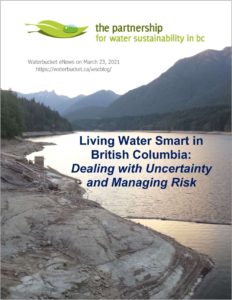 Climate Change is a Variable
Climate Change is a Variable
In 2005, at the Water OUT = Water IN workshop co-hosted by the Province and the Partnership, Robert Hicks of the Metro Vancouver Regional District explained that: “Climate change is not a driver; rather, it is a variable. Furthermore, climate change is only one factor to consider when we talk about sustainable infrastructure and sustainable water supply. The real issues are uncertainty and risk, more specifically how we deal with the first and manage the latter.”
“A constant challenge for planning is not to prevent past events, but instead is to use past experiences to inform and create flexible strategies for the present and the future. Furthermore, this need for flexibility is not restricted to the immediate scope of the problem at hand; but must also consider the broader juggling of evolving local government priorities and service demands.”
“This leads to the challenge of assessing problems with sufficient complexity to arrive at flexible and resilient solutions, while at the same time not being overwhelmed and paralyzed by over-analysis.”
To Learn More:
Download a copy of Living Water Smart in British Columbia: Dealing with Uncertainty and Managing Risk.
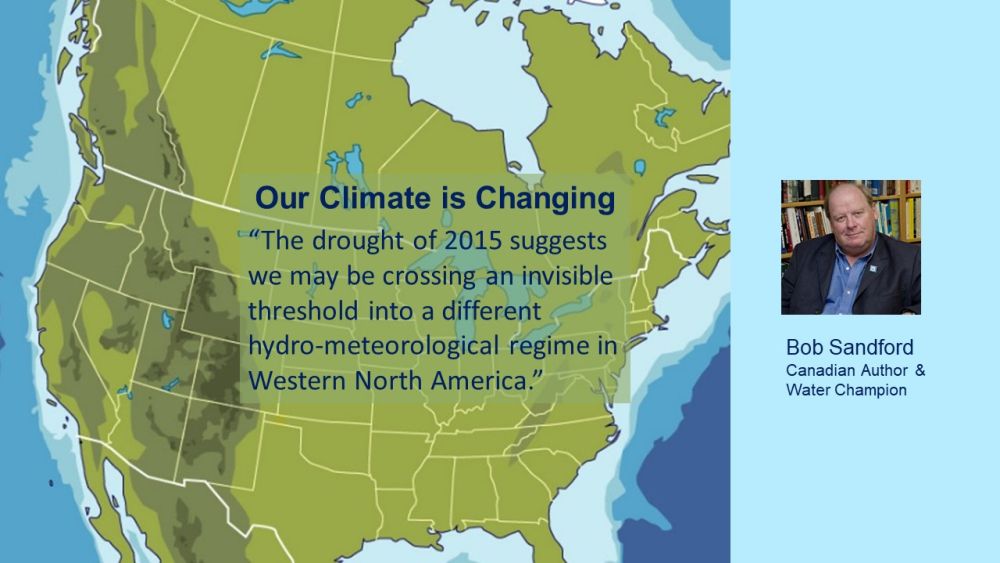
Flashback to the 2004 Penticton Drought Forum
“In 2003, British Columbia experienced one ‘teachable moment’ after another, highlighted by the Okanagan forest fires that resulted in mass evacuations and widespread destruction in the City of Kelowna and surrounding areas. The impact of this ‘teachable year’ was to set in motion a series of outcomes that have rippled through time,” continues Kim Stephens
“First came the Water Sustainability Action Plan, released in February 2004. Then came release of British Columbia’s Drought Response Plan in June 2004. This was followed by the Provincial Drought Forum held in July 2004 in Penticton, which was co-hosted by two cabinet ministers – George Abbott, Minister of Sustainable Resource Management (MSRM); and Bill Barisoff, Ministry of Water, Land and Air Protection (WALP).”
“An action item flowing from the Drought Forum was Achieving Water Balance: A Workshop on Dealing with Uncertainty and Managing Risk, held in Penticton in April 2005. The session purpose was to point the way forward to the next paradigm-shift in water supply management. Designed as a technical transfer session, it shone the spotlight on the Water OUT = Water IN way-of-thinking.”
To Learn More:
Read a set of resources posted on the Convening for Action in British Columbia community-of-interest under the dropdown for the 2004 Penticton Drought Forum
Read a set of resources posted on the Convening for Action in British Columbia community-of-interest under the dropdown for the 2005 Penticton Water OUT = Water IN Workshop
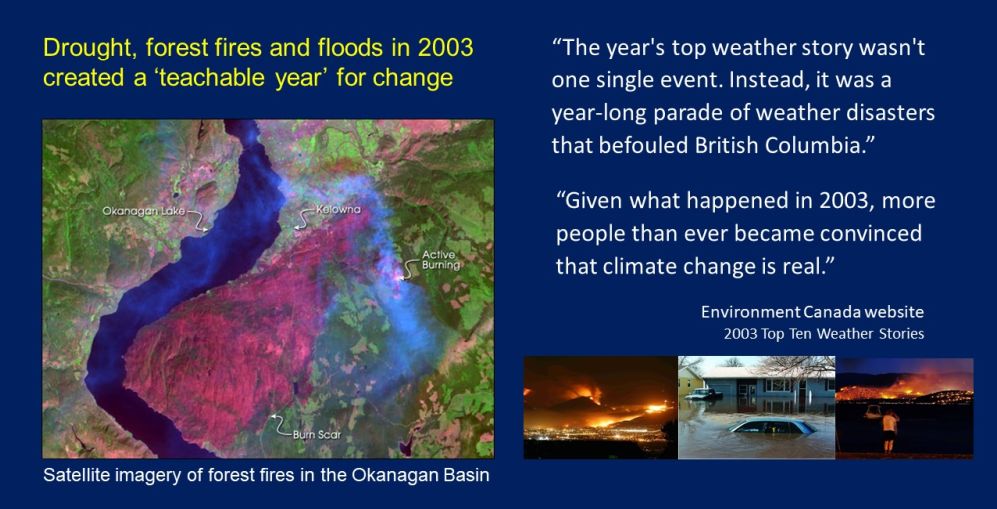
Getting ready – British Columbia’s drought response in 2021
“Drought severity in B.C. has previously been communicated through four “drought levels”. Because these categories are broad, it makes it difficult to communicate moderate levels of drought, worsening drought conditions over time, or when regions are experiencing abnormal water scarcity,” stated Julia Berardinucci, Director, Water Strategies and Conservation, Water Protection and Sustainability Branch
“Desired outcomes in going to a 6-level system include better understanding of current conditions, advance warning of extreme drought, and better alignment with other jurisdictions in North America. A new ‘severely dry’ level would signify a severe state of drought, and a new ‘exceptionally dry’ level would be used to identify drought conditions that are at or near historical lows.”
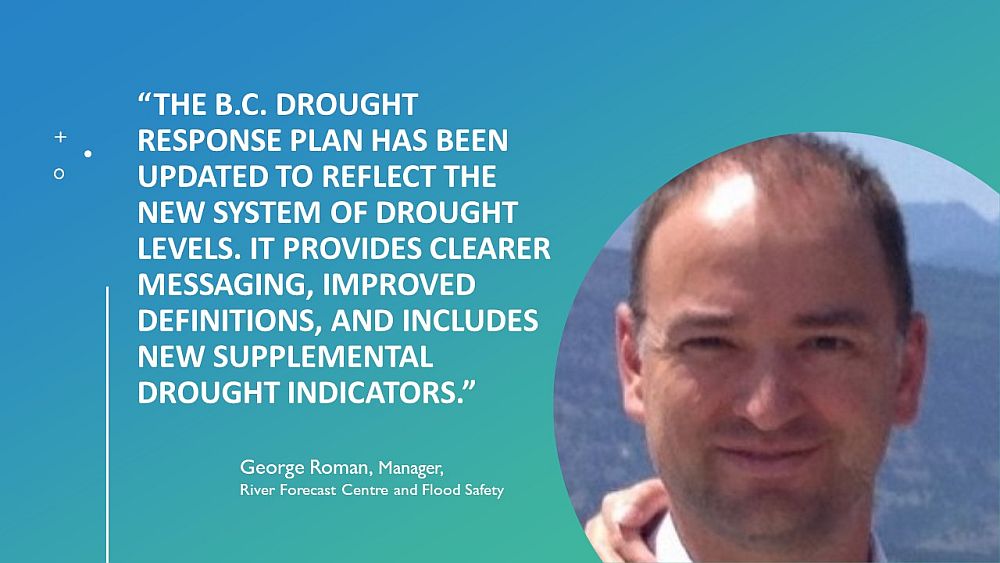
Updating of BC’s Drought Levels / Operational Trial
“In March 2021, the Province released a proposal to update and expand British Columbia’s (B.C.) drought levels. We received 24 individual comments on the proposal and heard support from the majority of respondents to expand the drought levels to a 6-level scale, align with the North American Drought Monitor best practices, and conduct an operational trial period this summer.”
“Government is now implementing a province-wide operational trial of the proposed drought levels during the spring and summer. An evaluation of the trial will be conducted at the end of this period to determine effectiveness. If the new levels are found beneficial, then they will likely become permanent.”
To Learn More:
More information on what government heard and the outcomes of the recent engagement period can be found on the Water Sustainability Act Blog Post #33, in the What We Heard and Outcomes document, and in a short video.
British Columbia Drought and Water Scarcity Response Plan / Update 2021
“We are pleased to announce that government is moving forward with a province-wide operational trial of the proposed drought levels during this year’s drought season,” continues George Roman, Manager, River Forecast Centre and Flood Safety.
“These updates better align the province with North American best practices and include revisions and feedback from public engagements held earlier this year. An evaluation of the drought levels trial will be conducted at the end of the drought season to determine effectiveness. If the new levels are found beneficial, then they will likely become permanent.”
“The B.C. Drought Response Plan was updated to reflect the new drought levels and is now available as the British Columbia Drought and Water Scarcity Response Plan. The Plan was also updated to provide clearer messaging, improved definitions, and include new supplemental drought indicators (such as water temperature and air temperature).”
“This Plan was developed, in part, by drawing from experience with previous droughts, including the summers of 2009 and 2015, both of which saw extremely low flows in many streams, and low groundwater levels in wells across B.C.”
To Learn More:
Download a copy of the British Columbia Drought and Water Scarcity Response Plan.
